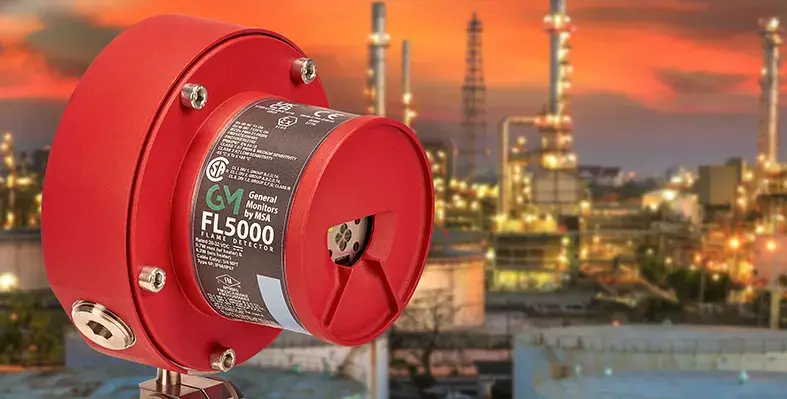MSA Safety discusses the benefits of a layered defense incorporating both gas and flame detection for safety in industrial environments
In industrial settings, safety is paramount, especially in environments where flammable or toxic gases are present, such as the oil, gas and petrochemical industry.
A robust gas detection system is an important line of defense, but it is not the whole story. Integrating flame detection into your safety setup can create a safer and more reliable environment.
The role of gas and flame detection systems
Gas detection systems are designed to identify harmful gases in the air, whether combustible, toxic, or asphyxiating. They provide early warnings, helping to enable preventive action before conditions become dangerous. However, gas detection alone doesn’t account for what happens when a gas leak ignites.
Flame detection systems complement gas detectors by identifying the presence of fire, which may occur even where gas concentration hasn’t yet reached detectable levels. Together, these systems can contribute to a more comprehensive safety net that addresses both potential and actual hazards.Why include flame detection in gas detection systems?
1. More comprehensive hazard mitigation
Gas detectors and flame detectors work hand-in-hand to prevent accidents and mitigate risks. While gas detectors alert you to the presence of a leak, flame detectors respond to fires that could result from undetected or ignited gases.
2. Faster response to fire emergencies
A gas leak can ignite in seconds, turning a potential hazard into an active emergency. Flame detectors react in real-time to the presence of a flame, helping to enable prompt action to contain the fire and prevent escalation.
3. Helps eliminate blind spots
Gas detection systems can only monitor specific zones. In scenarios where a leak occurs outside the detection range or a minor leak ignites directly, flame detectors can be an important second layer of protection.
4. Tailored for high-risk industries
In industries such as oil and gas, petrochemicals and manufacturing, the risk of fire due to flammable gases is ever present. Flame detection helps protect these high-stakes environments against both minor and catastrophic ignition events.
5. Meeting regulatory standards
Safety regulations often require both gas and flame detection systems for compliance. Adhering to these standards not only protects your team and assets but also ensures your operations meet legal and industry benchmarks.
6. Minimising damage and downtime
Early flame detection can activate suppression systems, limit the spread of fire, and enhance the safety of personnel. By containing incidents quickly, businesses can avoid costly equipment damage and extended downtime.
7. Enhanced operational safety and continuity
Combining gas and flame detection creates a more resilient safety framework that reduces the likelihood of accidents and enables a quicker recovery in the event of an incident. This reliability is key to maintaining trust and productivity.
A layered defense
Safety in industrial environments is not about choosing between gas or flame detection — it’s about understanding the benefits of both to build a layered defense.
While gas detectors prevent potential hazards by identifying leaks, flame detectors act as a safeguard when ignition occurs.
Safety managers may consider this combination a necessity in today’s high risk, high stakes industries. By integrating flame detection into your gas detection system, you help to ensure that your operations are protected from the full spectrum of potential hazards, safeguarding lives, assets, and your reputation.
Enhancing industrial safety with flame detection

Integrating flame detection into safety systems can create a safer and more reliable environment. (Image source: MSA Safety)






